Matchsticks and Chiffonade
Must-know Knife Skills
Cutting vegetables and herbs for a beautiful garnish is an “everyday gourmet” touch that’s simple when you have the right techniques. And when we talk culinary techniques, we’re talking must-know knife skills—how to create professional-looking matchsticks and crisp chiffonade, for instance.
Knife skills are too often overlooked when it comes to food prep. But good skill with these tools means you can create beautiful dishes and save time in the process. More and more, folks are turning to hearty meals with lots of vegetables: strips of bell peppers, matchstick zucchini, and cherry tomatoes.
Wait—matchstick zucchini? Yes. According to Google, the proper term is julienne and it means cut into long thin strips…like a matchstick. The technique is simple using a sharp chef’s knife and a sturdy and stationary cutting board. Melissa at the great site, www.redwhiteandblueberries.com, shows us how to matchstick zucchini:
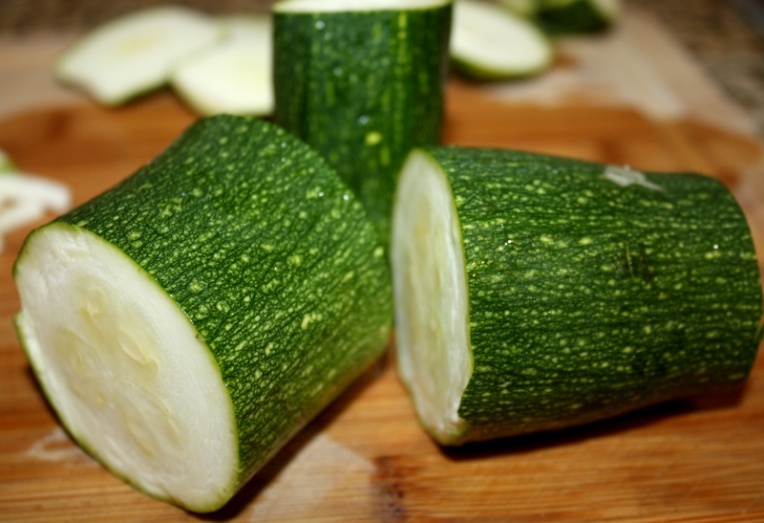
Step 1: Cut off the ends of a small to medium zucchini then cut into 3 inch segments.

Step 2: Stand each segment on end and cut off the sides so that they make squares.
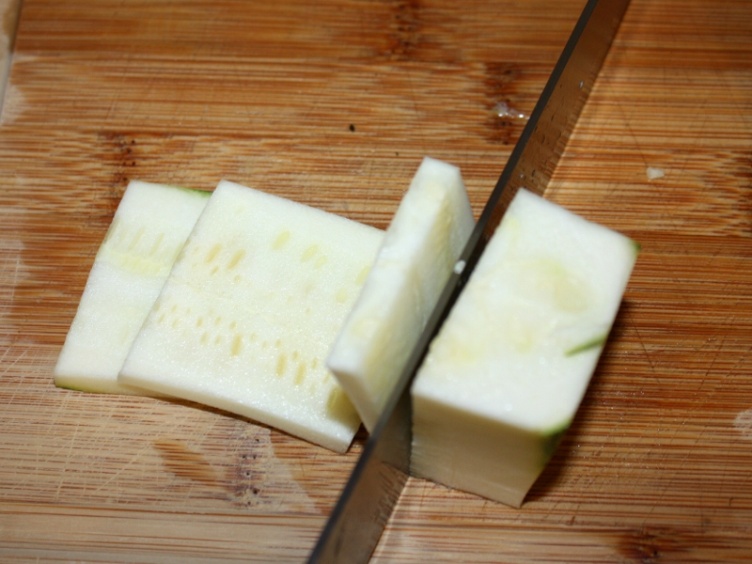
Step 3: Slice each square into 1/8” wide slices.
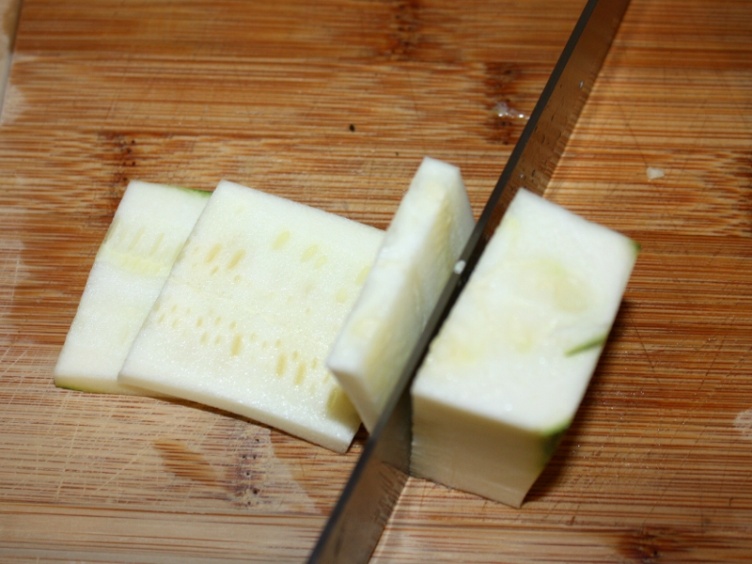
Step 4: Stack up the slices and cut them 1/8” wide.
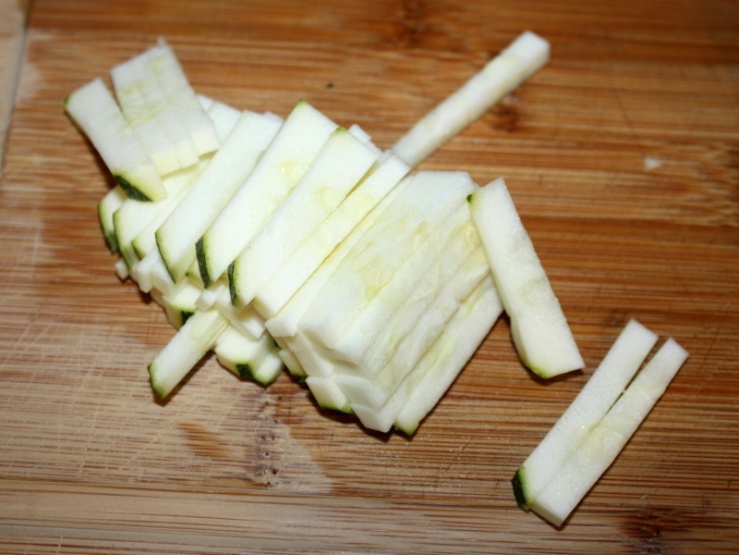
Step 5: Repeat for all segments. And TADA!
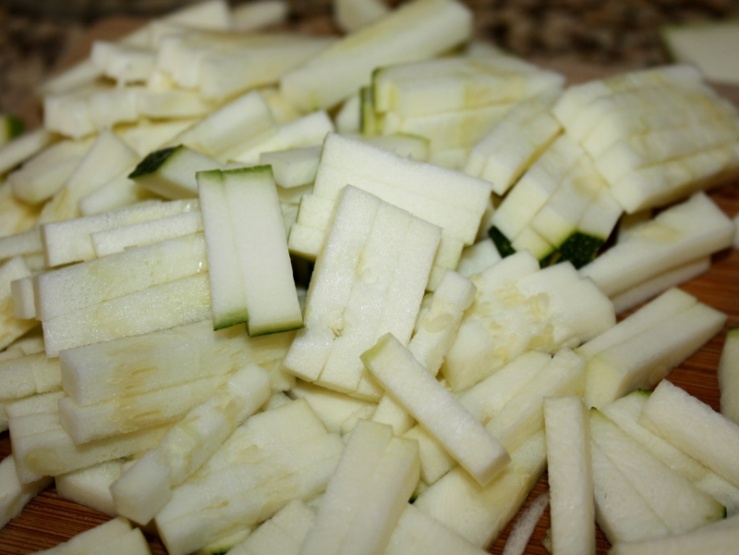
Another vegetable, the carrot, also does well as a matchstick. The process is similar to that of the zucchini. Here’s how the chefs at www.floridacoastalcooking.com do it:
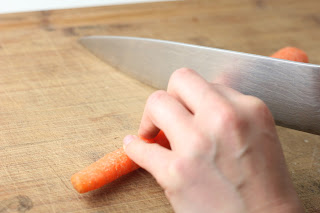
Cut the carrot in half.

Cut the outer sides to make a square shape. This will make it easier to cut and it won’t roll around.
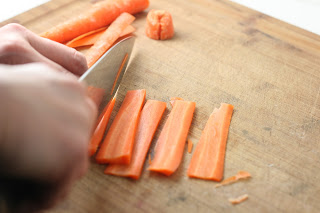
Cut thin strips lengthwise like so and lay them next to each other. You can also stack them but I find they move around a bit too much.

Cut the matchsticks from the strips you just laid out.
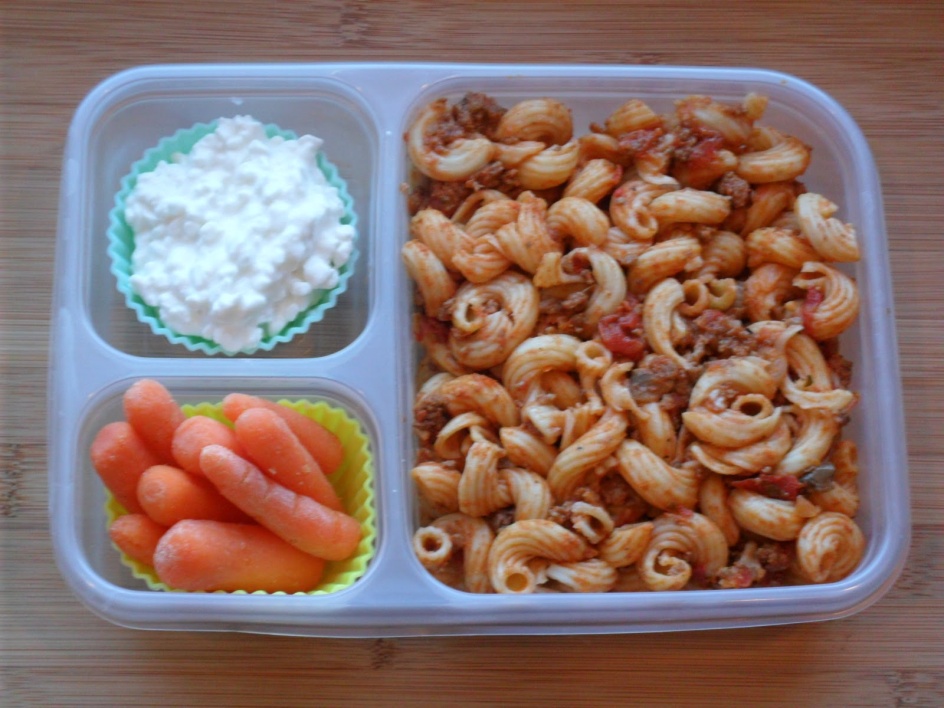
Besides creating lovely vegetable platters or exquisite veggies for a stir fry, matchsticking is a good way to save some money. For instance, one of the very cool things we can do with vegetable matchsticks is to create our own Bento boxes (Japanese for lunch in a box). This pasta lunch above includes baby carrots—expensive and not that good, either. Instead of buying a chemical-laden bag of baby carrots, buy some unprocessed full carrots and give them the matchstick treatment.
And then there’s the chiffonade (which means “made of rags” in French). Basil and mint are typically used in this process. A basil or mint chiffonade is a flavorful, beautiful accent for dishes like pastas and fruit salads. Using fresh basil, here's how the folks at www.finecooking.com cut a chiffonade:
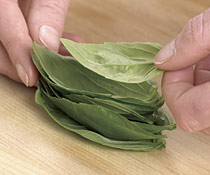
1. Stack about ten leaves into a neat pile. With practice, you may find that you can handle more than ten at a time.

2. Roll the pile of leaves lengthwise into a fairly tight cigar shape.
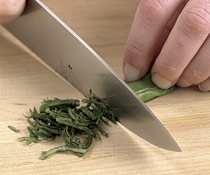
3. Use your sharpest knife to slice across the cigar. The closer together the slices, the finer your chiffonade will be.
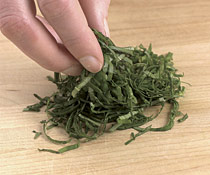
4. Fluff the chiffonade with your fingertips to separate the shreds. The cut edges will darken quickly, so use the chiffonade as soon as possible.
It goes without saying of course, that whether matchsticking or doing a chiffonade, you’ll want a very sharp knife. Assuming you already do, give these two food prep tricks a try. These must-know life skills can take your food presentation from so-so to everyday gourmet!
- www.redwhiteandblueberries.com
- www.floridacoastalcooking.com
- www.finecooking.com
 Alice Osborne
Alice Osborne
Weekly Newsletter Contributor since 2006
Email the author! alice@dvo.com
